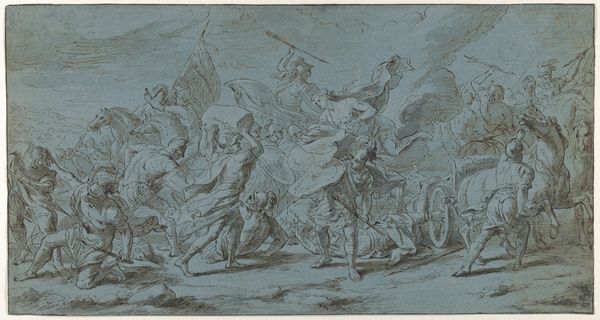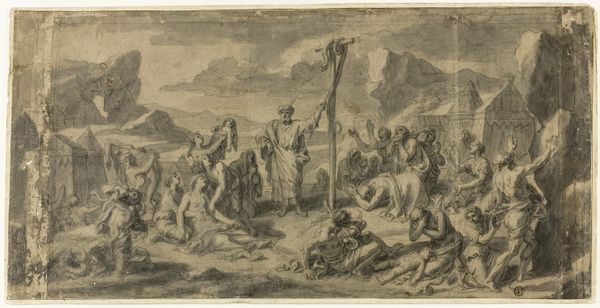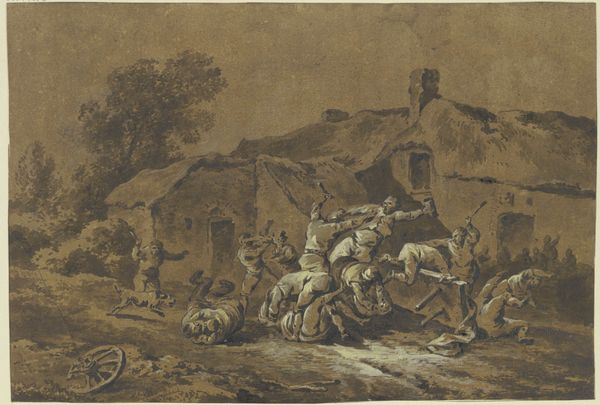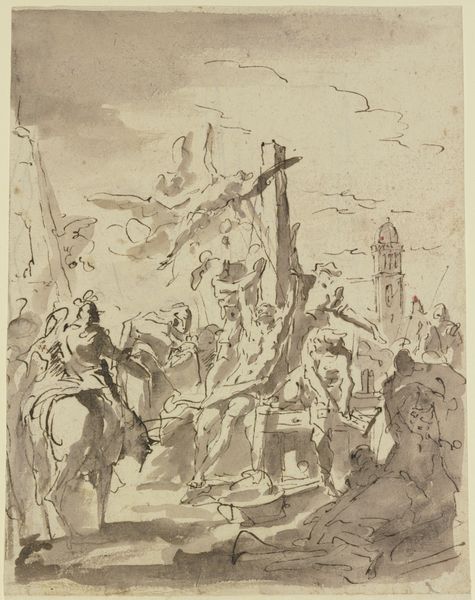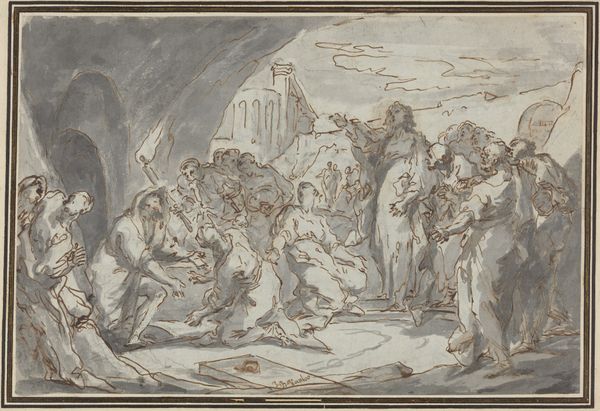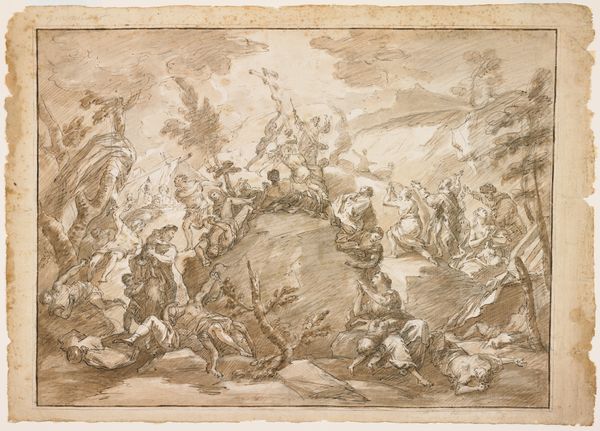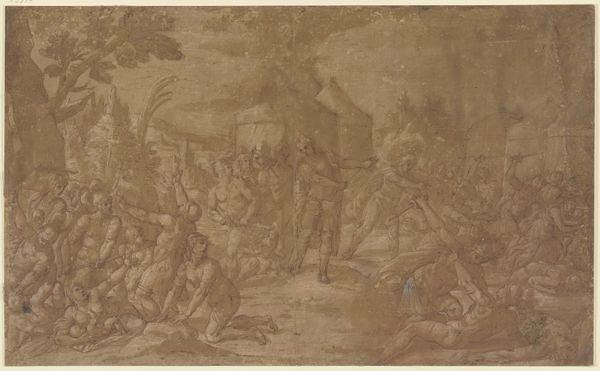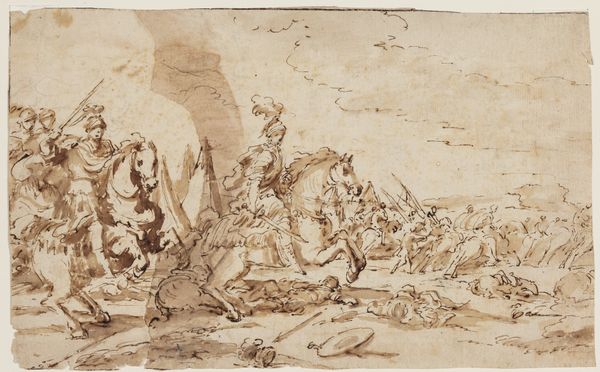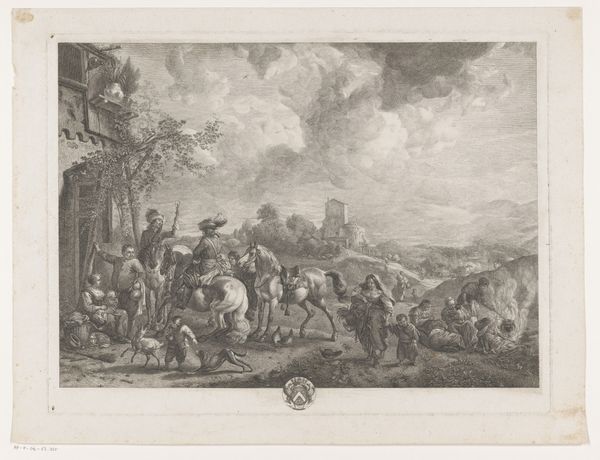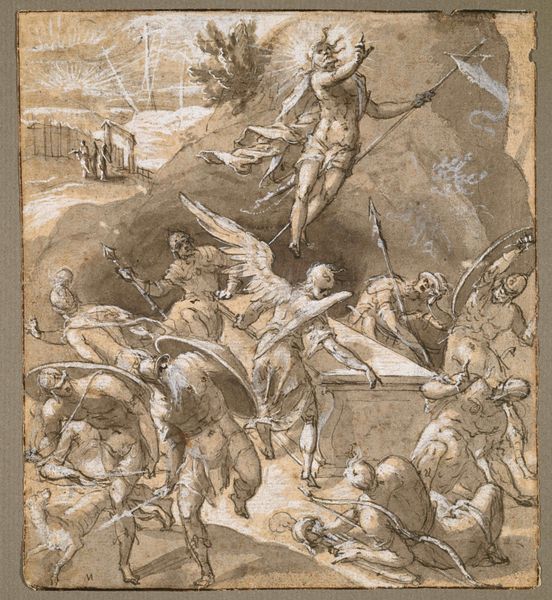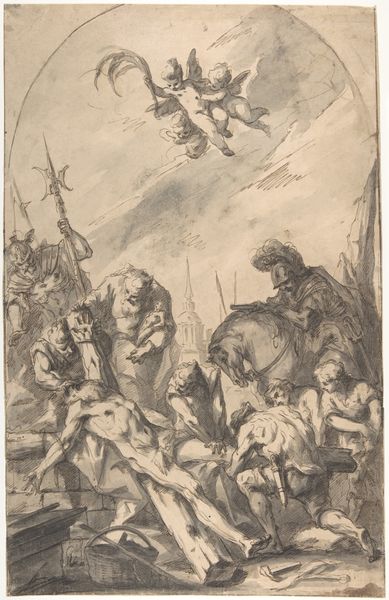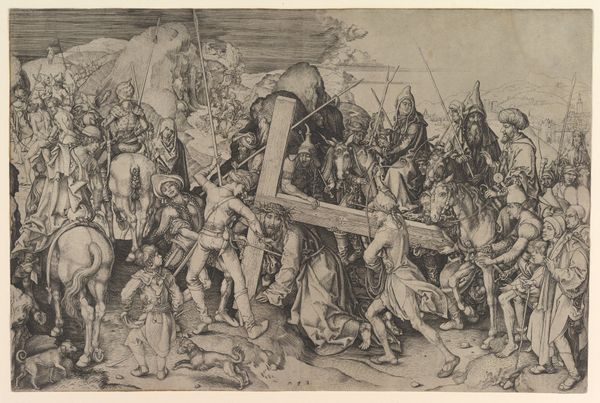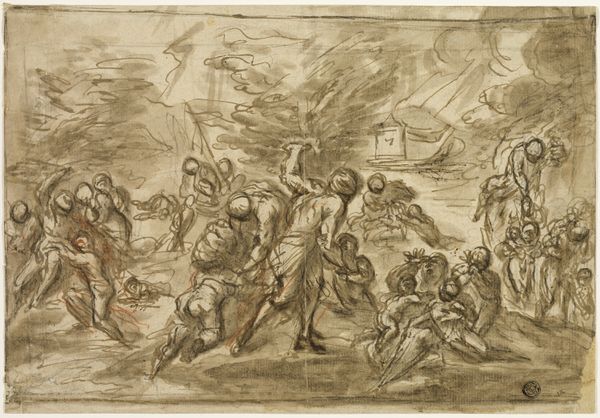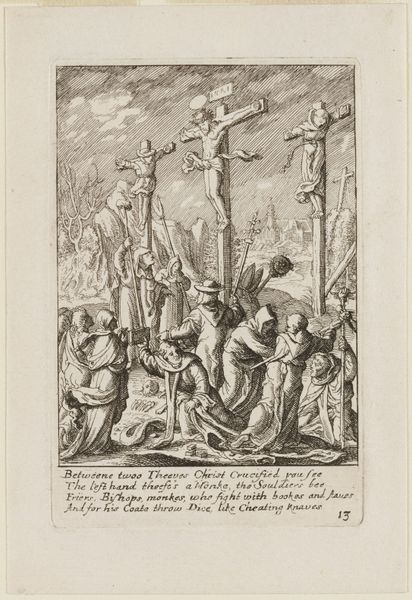
drawing, print, ink, pen, charcoal
#
drawing
#
narrative-art
#
baroque
# print
#
figuration
#
ink
#
pen-ink sketch
#
line
#
pen
#
crucifixion
#
charcoal
#
history-painting
Dimensions: 8 9/16 x 10 9/16 in. (21.7 x 26.8 cm)
Copyright: Public Domain
Editor: Here we have Thomas de Keyser’s "Crucifixion," created around 1665. It’s a pen and ink drawing, full of these sweeping lines, but despite the chaotic scene, there's a haunting stillness to it all. What strikes you when you look at this piece? Curator: The enduring power, even now, lies in its brutal depiction of state-sanctioned violence. Look at the faceless crowd, the impassive soldiers on horseback – they represent the machinery of power crushing dissent. De Keyser situates the crucifixion not just as a religious event but as a moment of profound political oppression. How do you think this imagery might have resonated with audiences in the 17th century? Editor: I suppose seeing this kind of injustice visualized might have felt incredibly dangerous, maybe even subversive. Was he commenting on specific political situations of his time? Curator: Absolutely. Remember, the 17th century was a period of intense religious and political conflict across Europe. By depicting this scene with such stark realism, De Keyser subtly critiques the abuse of power by those in authority. Think about how often religious narratives have been used to justify political actions. It raises questions about who gets to interpret those narratives, doesn't it? Editor: It really does. Seeing it framed this way makes it more about resistance than just suffering. I didn’t pick that up at first. Curator: Precisely. The power dynamics at play here are still relevant today. What does it say that the image of a man executed by the state continues to provoke such strong reactions centuries later? Editor: I guess it means the struggle for justice and equality is ongoing. Thanks, this really made me rethink how I see this drawing.
Comments
No comments
Be the first to comment and join the conversation on the ultimate creative platform.
